Cyril Frederick Cherrington Beeson CIE, D.Sc. (1889–1975) was an English entomologist and forest conservator who worked in India. Beeson was an expert on forest entomology who wrote numerous papers on insects, and whose book on Indian forest insects remains a standard work on the subject. After his retirement and return to England he became an antiquarian horologist.
 W
WA flyback chronograph is a complication watch, in which the user can use the reset function without the need to first stop the chronograph. In regular chronographs, the user must stop, reset, and restart the chronograph in order to time an event after the chronograph has started.
 W
WRupert Thomas Gould was a lieutenant-commander in the British Royal Navy noted for his contributions to horology. He was also an author and radio personality.
 W
WA ballistic chronograph or gun chronograph is a measuring instrument used to measure the velocity of a projectile in flight, typically fired from a gun.
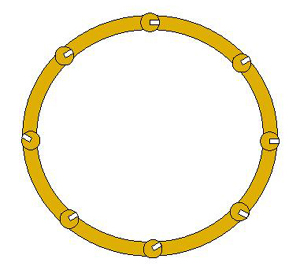 W
WThe Gyromax is the trade name for an adjustable mass balance wheel used in Patek Philippe wristwatches. Instead of weight adjustment screws on the outside of the rim, as in traditional balances, the Gyromax has turnable weights recessed into the top of the rim. The advantages claimed for this design are that, without projecting weight screws, the diameter of the balance can be increased, giving it a larger moment of inertia, and that it has less air resistance.
 W
WJohn James Hall FRAS was an eminent horologist and author who restored many early clocks.
 W
WFrank Hope-Jones (1867–1950) was a British horologist.
 W
WCourtenay Adrian Ilbert (1888–1956), a professional civil engineer interested in horology, was a notable private collector of watches. He brought together the most important collection of watches ever achieved by a private collector. In 1958, after his death, his collection was acquired by the British Museum. Initially, the collection had been put up for auction, but was saved for the public by a private donation to the British Museum for this purpose and the auction was subsequently cancelled. The collection, now known as the Ilbert collection, includes the Earnshaw 509 chronometer one of only two surviving out of a complement of 22 from the voyage of the Beagle.
 W
WChronometers were formerly used for the accurate determination of longitude by ships at sea. By measuring the time of local solar noon compared to the time of noon at a reference point the difference in longitude can be directly found. For this system to work, a timepiece showing the time at the reference point must be carried to the measuring point. A timepiece intended to remain accurate while subjected to the motions of a ship at sea and through extreme changes in environment, especially temperature, is called a chronometer. These were first built in the 18th century and were used extensively by mariners in the 19th century and into the 20th century, even after the widespread use of radio for time signals – the time signal was used to set the chronometer, but the instrument was still necessary to display the time.
 W
WThe longitude rewards were the system of inducement prizes offered by the British government for a simple and practical method for the precise determination of a ship's longitude at sea. The rewards, established through an Act of Parliament in 1714, were administered by the Board of Longitude.
 W
WA marine chronometer is a timepiece that is precise and accurate enough to be used as a portable time standard; it can therefore be used to determine longitude by means of accurately measuring the time of a known fixed location, for example Greenwich Mean Time (GMT) and the time at the current location. When first developed in the 18th century, it was a major technical achievement, as accurate knowledge of the time over a long sea voyage is necessary for navigation, lacking electronic or communications aids. The first true chronometer was the life work of one man, John Harrison, spanning 31 years of persistent experimentation and testing that revolutionized naval navigation and enabling the Age of Discovery and Colonialism to accelerate.
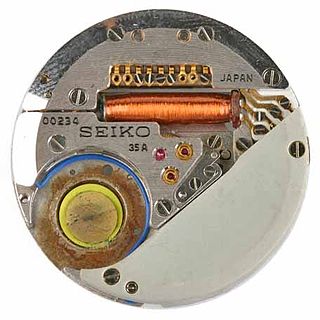 W
WIn watchmaking, the quartz crisis is the upheaval in the industry caused by the advent of quartz watches in the 1970s and early 1980s, that largely replaced mechanical watches around the world. It caused a significant decline of the Swiss watchmaking industry, which chose to remain focused on traditional mechanical watches, while the majority of the world's watch production shifted to Asian companies such as Seiko, Citizen and Casio in Japan that embraced the new electronic technology.
 W
WRevolution is a quarterly publication about luxury mechanical watches. First published in 2005, it is now one of the leading magazines in its sector, with a readership that consists of both watch connoisseurs and industry insiders, from designers to CEOs. It is currently available in 13 international editions in six different languages.
 W
WGeorges Frederic Roskopf, the inventor of the pin-pallet escapement, was born in Germany and became a naturalized Swiss citizen.
 W
WDonald Jay Saff is an artist, art historian, educator, and lecturer, specializing in the fields of contemporary art in addition to American and English horology. Saff was born in Brooklyn, New York to Irving and Rose Saff and is the second of three sons. His brothers are Dr. Harvey Saff and mathematician Dr. Edward Saff. Donald Saff married Ruth Saff in 1960; they have two sons, Stephen Saff, A.I.A. and Jeffery Saff, J.D. and L.L.M.
 W
WThe Self Winding Clock Company (SWCC) was a major manufacturer of electromechanical clocks from 1886 until about 1970. Based in New York City, the company was one of the first to power its clocks with an electric motor instead of winding by hand.
 W
WA nautical chronometer made by Thomas Earnshaw (1749–1828), and once part of the equipment of HMS Beagle, the ship that carried Charles Darwin on his voyage around the world, is held in the British Museum. The chronometer was the subject of one episode of the BBC's series A History of the World in 100 Objects.
 W
WWilliam Hamilton Shortt (1881-1971) was a railway engineer and noted horologist, responsible for the design of the Shortt-Synchronome free pendulum clock, a widely used time standard, employed internationally in observatories in the period between the two World Wars. His deep involvement in precision timekeeping, as a colleague of Frank Hope-Jones and director of the Synchronome Company, derived from work on the safety of train travel and the accurate measurement of train speeds, following investigations into a serious train derailment of a LSWR train at Salisbury Station in 1906, when twenty-eight people died.
 W
WSidereal time is a timekeeping system that astronomers use to locate celestial objects. Using sidereal time, it is possible to easily point a telescope to the proper coordinates in the night sky. Briefly, sidereal time is a "time scale that is based on Earth's rate of rotation measured relative to the fixed stars".
 W
WA sundial is a device that tells the time of day when there is sunlight by the apparent position of the Sun in the sky. In the narrowest sense of the word, it consists of a flat plate and a gnomon, which casts a shadow onto the dial. As the Sun appears to move across the sky, the shadow aligns with different hour-lines, which are marked on the dial to indicate the time of day. The style is the time-telling edge of the gnomon, though a single point or nodus may be used. The gnomon casts a broad shadow; the shadow of the style shows the time. The gnomon may be a rod, wire, or elaborately decorated metal casting. The style must be parallel to the axis of the Earth's rotation for the sundial to be accurate throughout the year. The style's angle from horizontal is equal to the sundial's geographical latitude.
 W
WA tide dial, also known as a Mass or scratch dial, is a sundial marked with the canonical hours rather than or in addition to the standard hours of daylight. Such sundials were particularly common between the 7th and 14th centuries in Europe, at which point they began to be replaced by mechanical clocks. There are more than 3,000 surviving tide dials in England and at least 1,500 in France.
 W
WA time ball or timeball is an obsolete time-signalling device. It consists of a large, painted wooden or metal ball that is dropped at a predetermined time, principally to enable navigators aboard ships offshore to verify the setting of their marine chronometers. Accurate timekeeping is essential to the determination of longitude at sea.
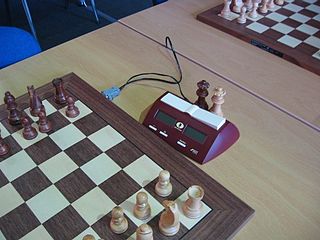 W
WA time control is a mechanism in the tournament play of almost all two-player board games so that each round of the match can finish in a timely way and the tournament can proceed. Time controls are typically enforced by means of a game clock, where the times below are given per player. Time pressure is the situation of having very little time on a player's clock to complete their remaining moves.
 W
WIn sociology and anthropology, time discipline is the general name given to social and economic rules, conventions, customs, and expectations governing the measurement of time, the social currency and awareness of time measurements, and people's expectations concerning the observance of these customs by others.
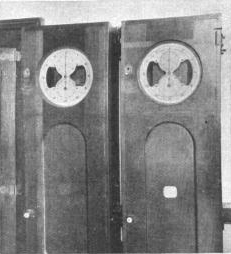 W
WA time signal is a visible, audible, mechanical, or electronic signal used as a reference to determine the time of day.
 W
WIn horology, a tourbillon is an addition to the mechanics of a watch escapement to increase accuracy. It was developed around 1795 and patented by the French-Swiss watchmaker Abraham-Louis Breguet on June 26, 1801. In a tourbillon the escapement and balance wheel are mounted in a rotating cage, in order to negate the effects of gravity when the timepiece is stuck in a certain position. By continuously rotating the entire balance wheel/escapement assembly at a slow rate, the tourbillon averages out positional errors.
 W
WUpton Hall is the headquarters of the British Horological Institute (BHI) in Upton, Newark and Sherwood, Nottinghamshire, England. It has been the headquarters since 1972. It also houses the Museum of Timekeeping consisting of a substantial collection of clocks, watches and also a library. The Museum is open to the public during seasonal summer opening hours, for special events and for pre-booked Group tours.
 W
WRichard of Wallingford (1292–1336) was an English mathematician, astronomer, horologist, and cleric who made major contributions to astronomy and horology while serving as abbot of St Albans Abbey in Hertfordshire.
 W
WA world clock is a clock which displays the time for various cities around the world. The display can take various forms:The clock face can incorporate multiple round analogue clocks with moving hands or multiple digital clocks with numeric readouts, with each clock being labelled with the name of a major city or time zone in the world. It could also be a picture map of the world with embedded analog or digital time-displays. A moving circular map of the world, rotating inside a stationary 24-hour dial ring. Alternatively, the disc can be stationary and the ring moving. Light projection onto a map representing daytime, used in the Geochron, a brand of a particular form of world clock.
 W
WThe Worshipful Company of Clockmakers was established under a Royal Charter granted by King Charles I in 1631. It ranks sixty-first among the livery companies of the City of London, and comes under the jurisdiction of the Privy Council. The company established a library and its Museum in 1813, which is the oldest specific collection of clocks and watches worldwide. This is administered by the company's affiliated charity, the Clockmakers’ Charity, and is presently housed on the second floor of London's Science Museum. The modern aims of the company and its Museum are charitable and educational, in particular to promote and preserve clockmaking and watchmaking, which as of 2019 were added to the HCA Red List of Endangered Crafts.
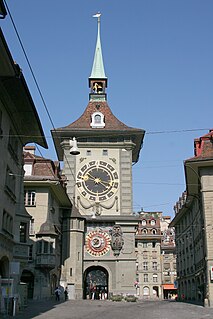 W
WThe Zytglogge is a landmark medieval tower in Bern, Switzerland. Built in the early 13th century, it has served the city as guard tower, prison, clock tower, centre of urban life and civic memorial.